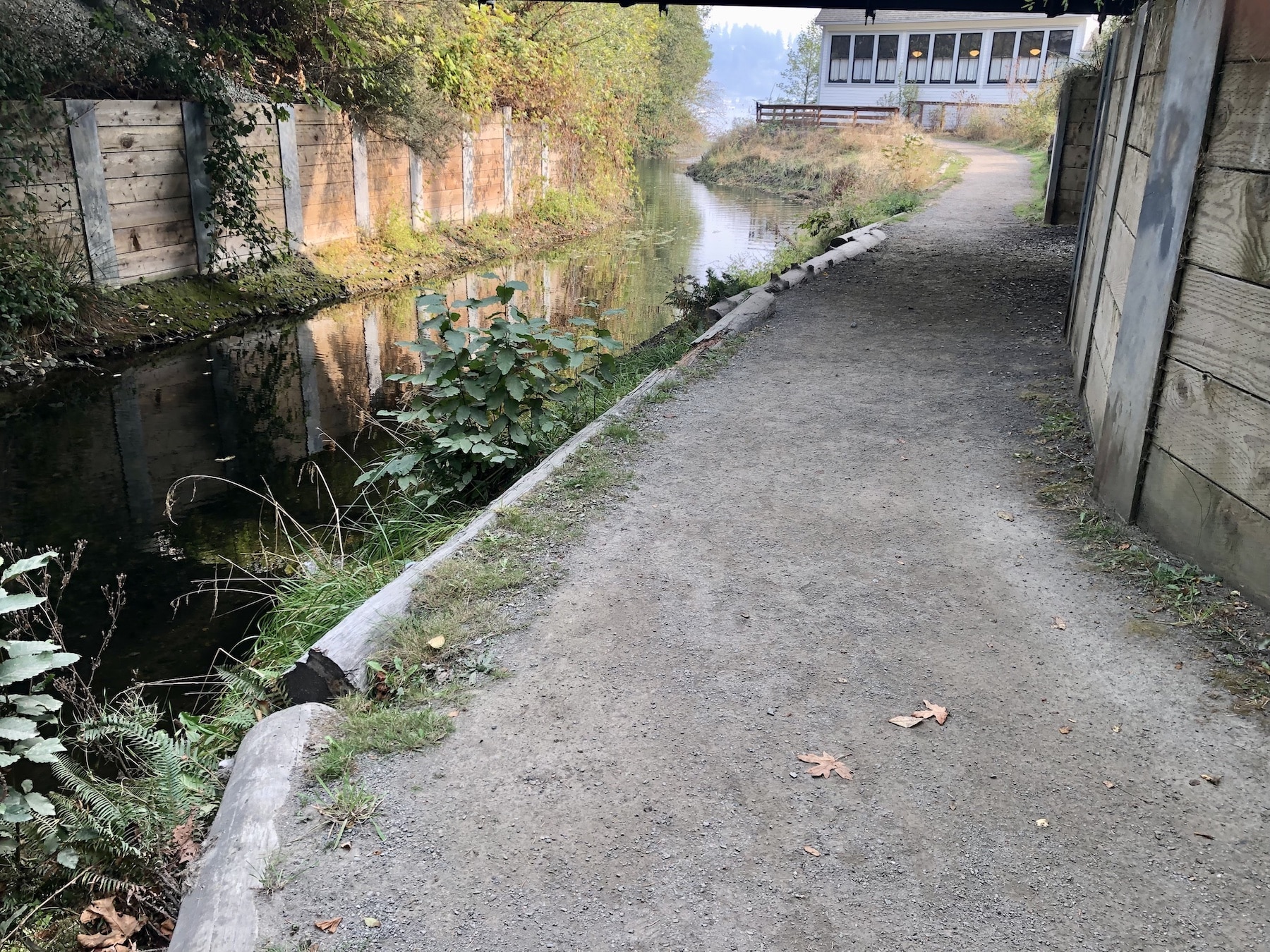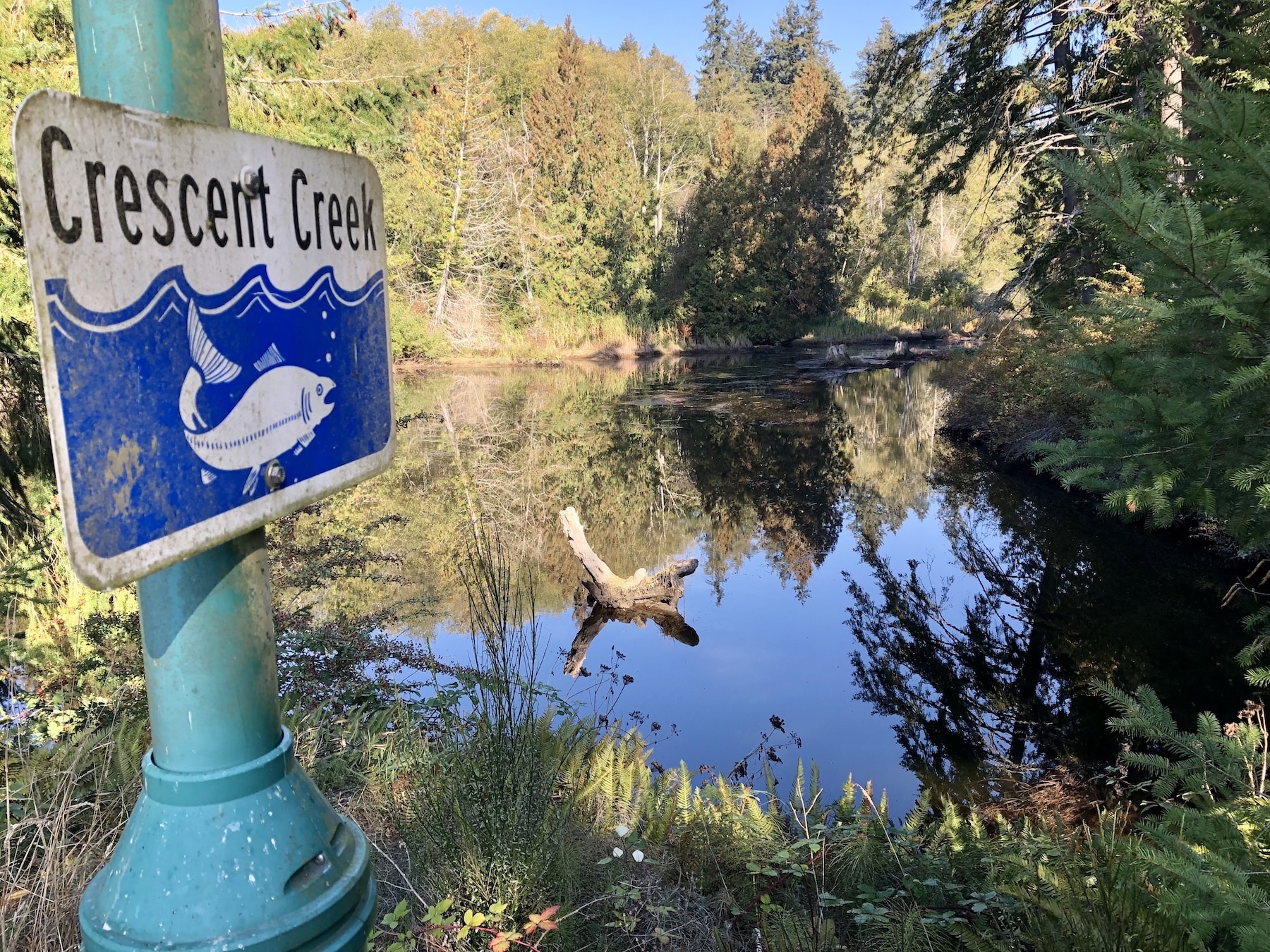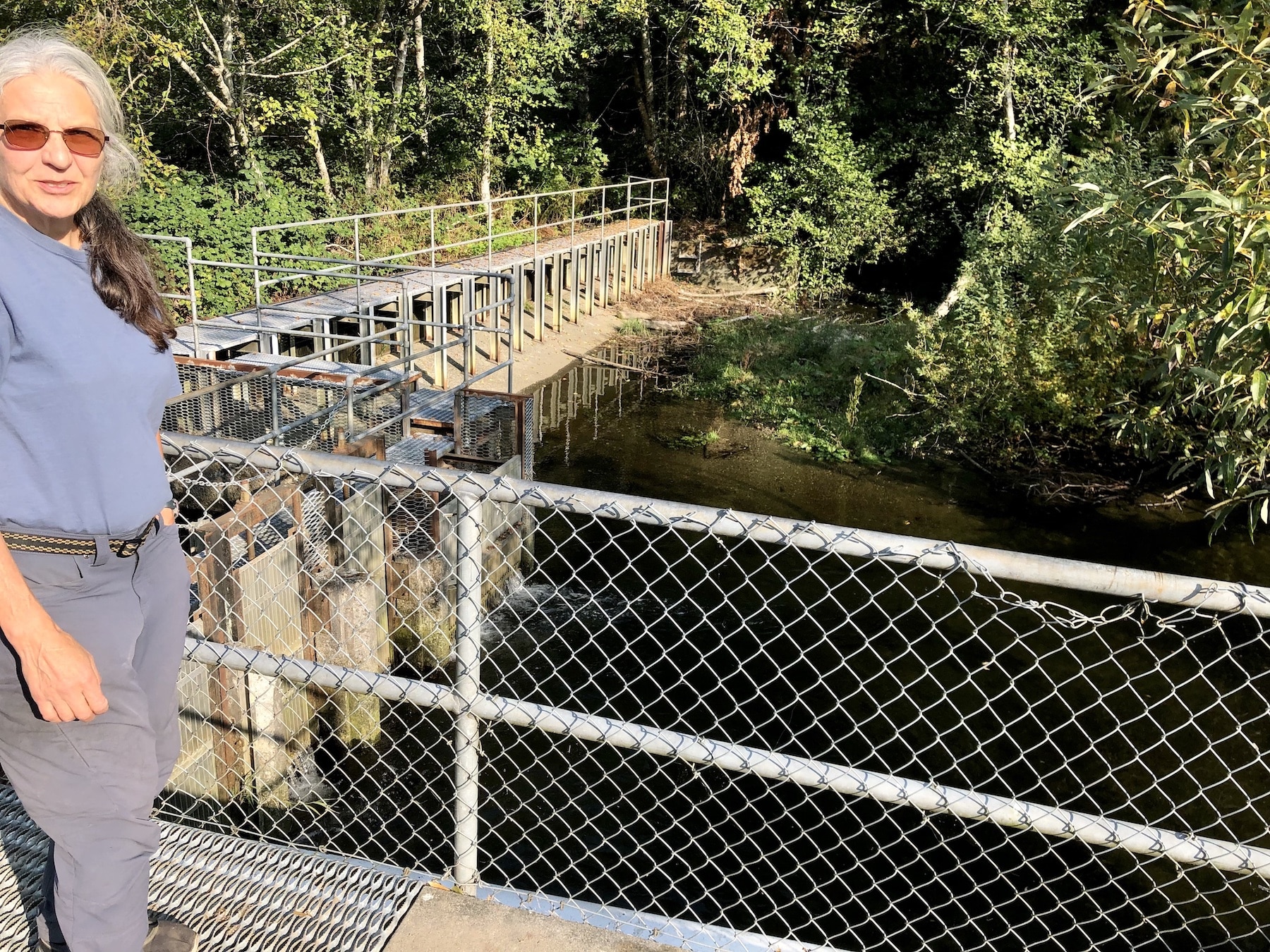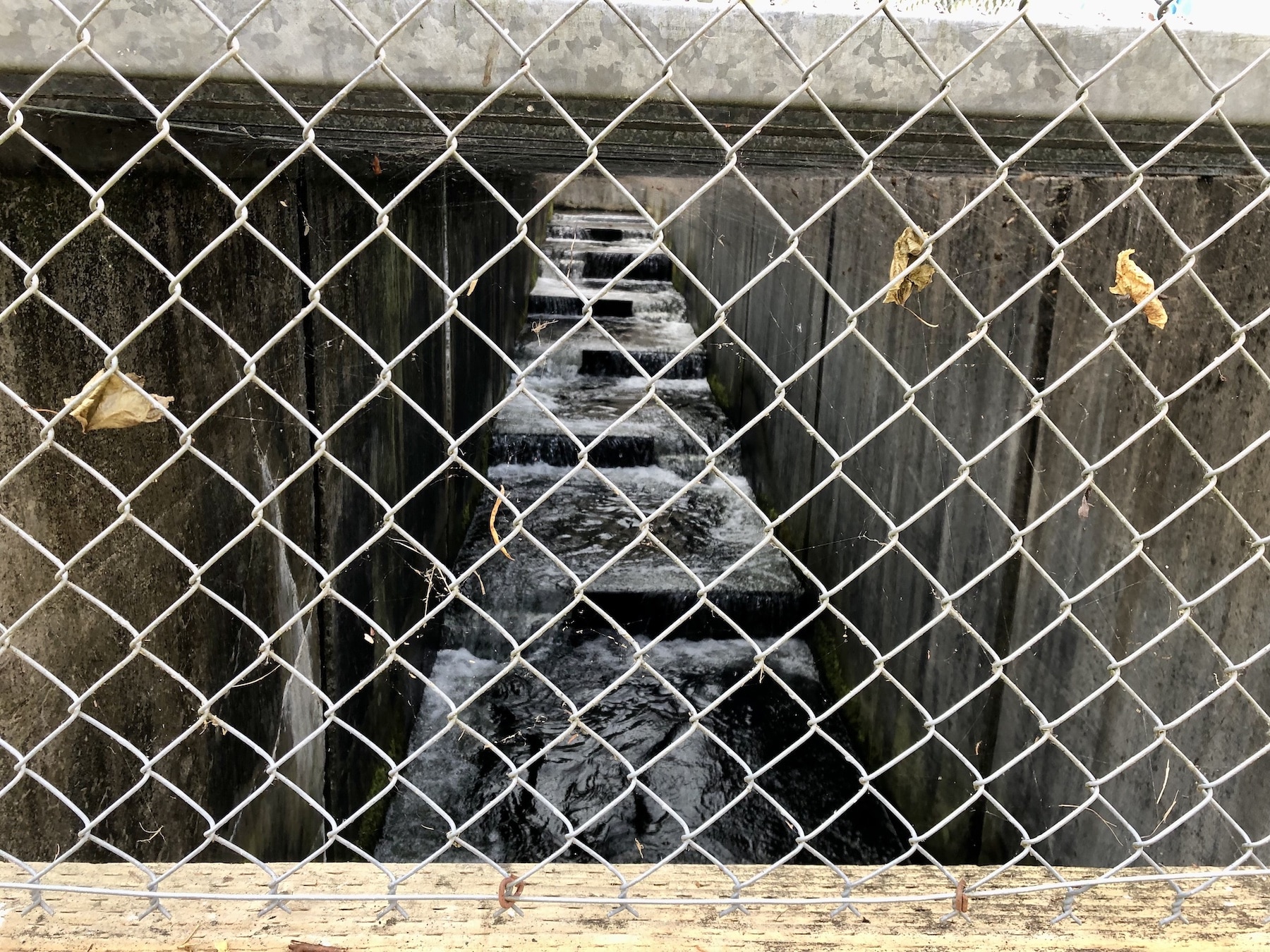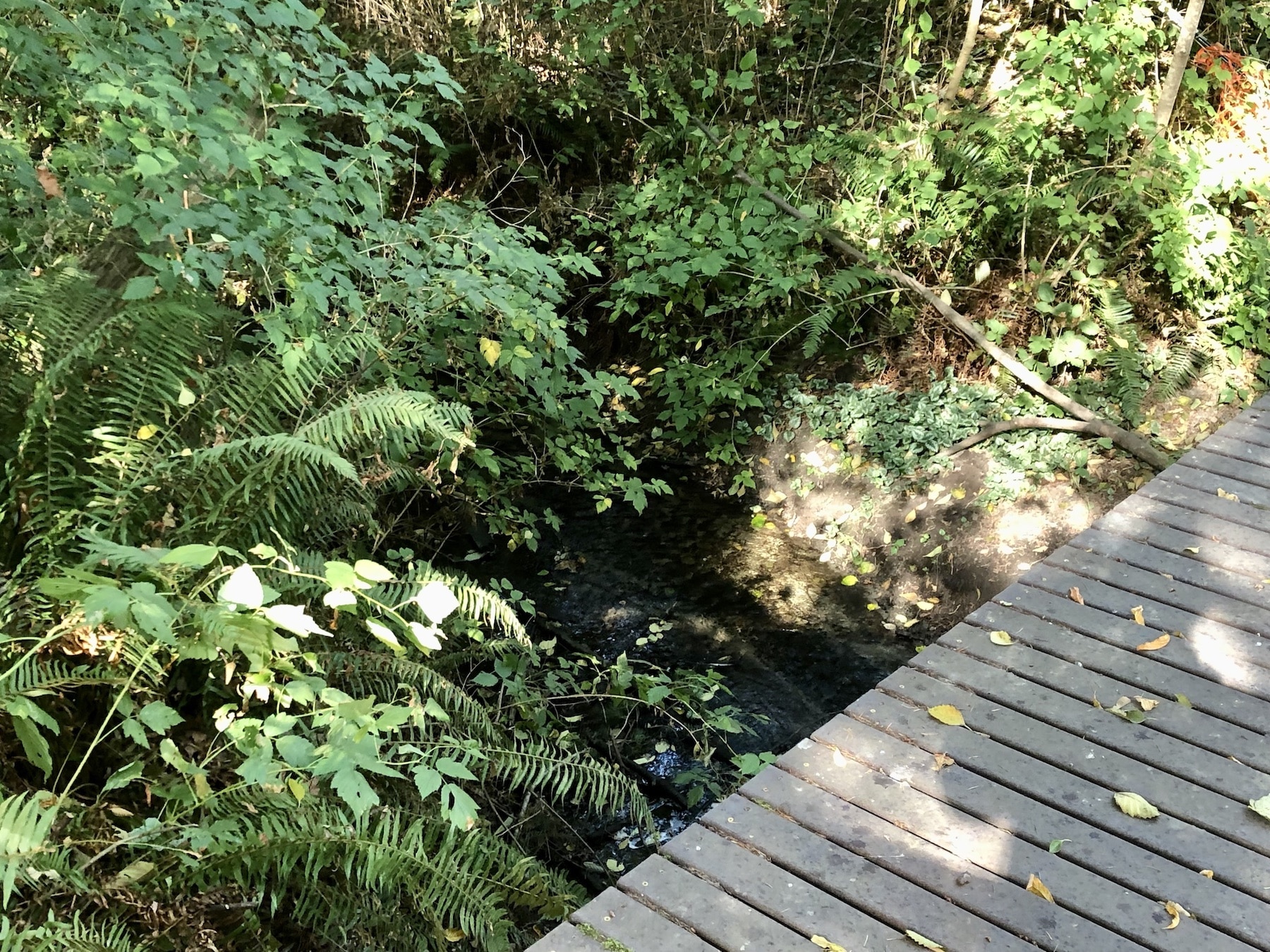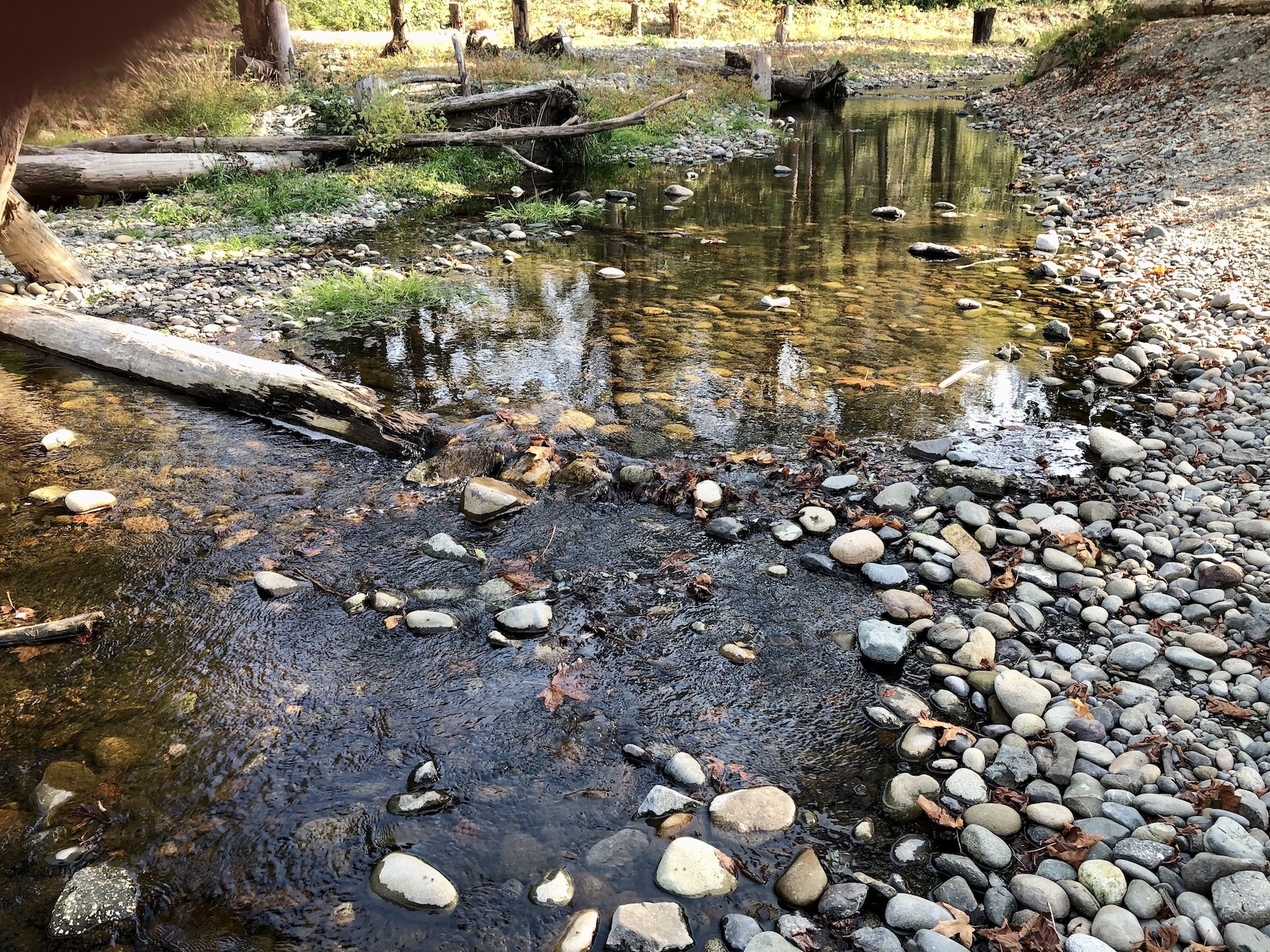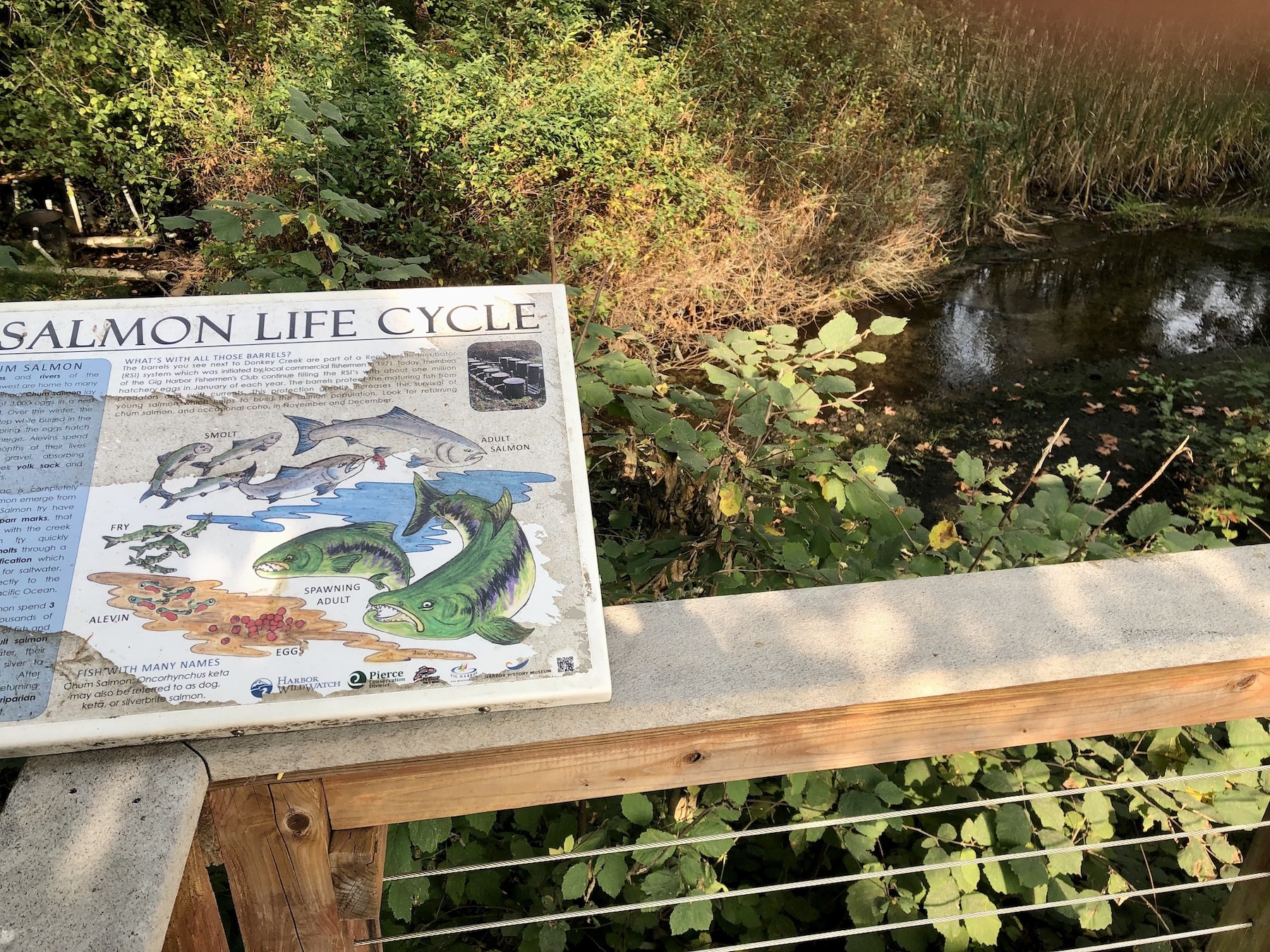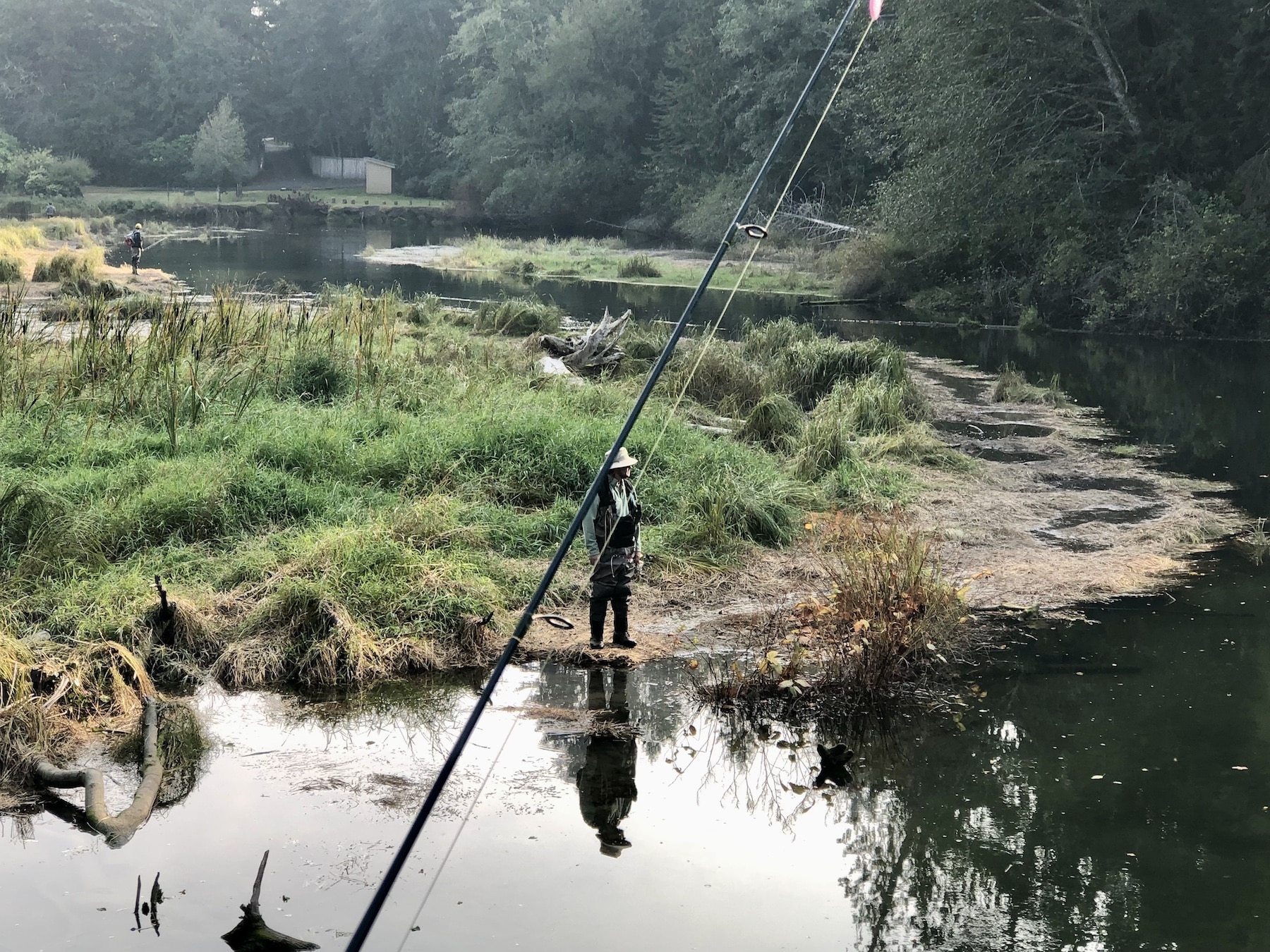Community Environment
Chum coming soon to a stream near you
It’s go time for chum salmon.
Biological clock alarms have blared, cueing the sleek fish back toward their birthplace of three or four years prior. They stage near creeks, awaiting rain predicted for Friday and thereafter to buoy them up streams shriveled by a record-dry summer and early fall.
Meanwhile, silvery bodies transform to olive and purple stripes as chum prepare for the shift from saltwater to freshwater. Snouts become hooked and lined with large canine-like teeth, thus the nickname dog salmon.
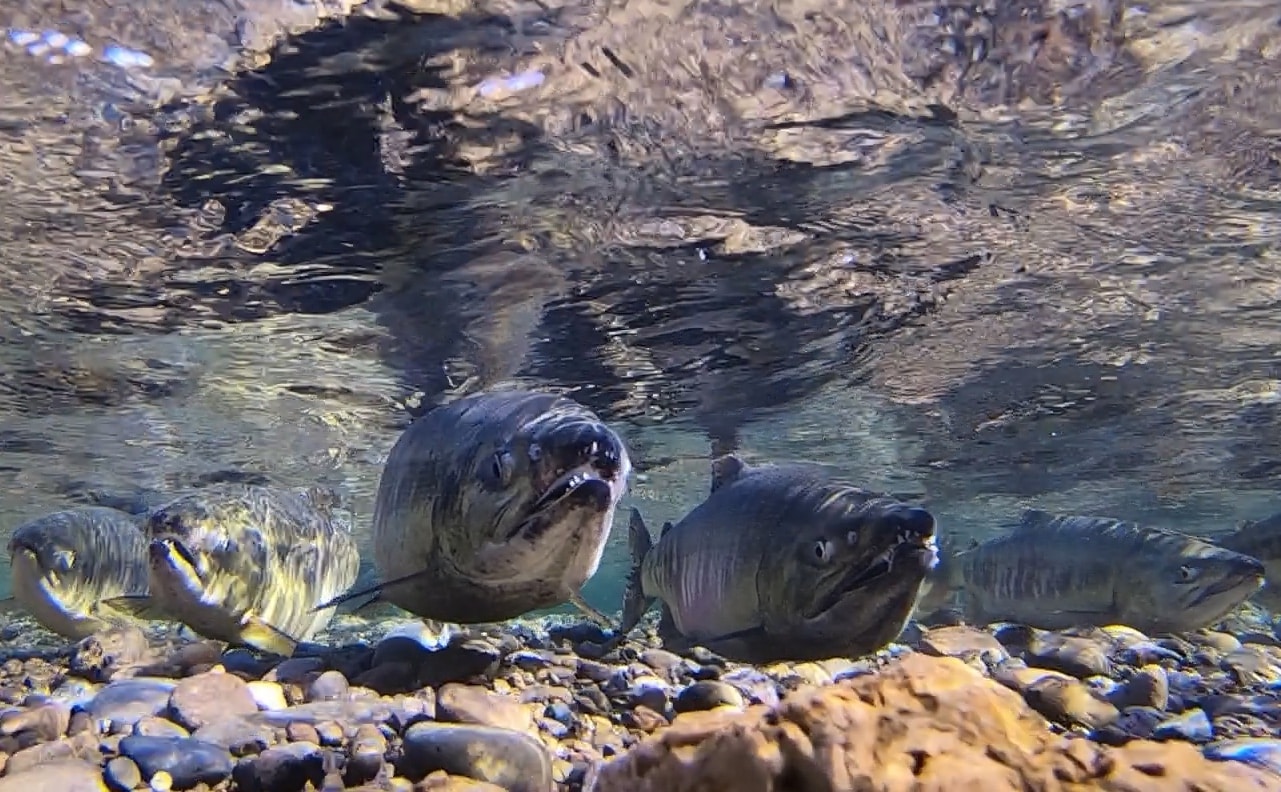
Chum salmon’s silvery ocean bodies turn to maroon and olive vertical stripes when they spawn. They also grow big, doglike teeth.
Where to watch
Chum provide the best local salmon viewing opportunities because there are so many, they prefer the small streams that the area offers and there are safe, accessible places to see them. About half a million spawn in South Sound streams every year, said Mickey Agha, statewide salmon science and policy analyst with the Washington Department of Fish & Wildlife. One of the best places to see them is right here in town.
Donkey Creek Park, 8714 N. Harborview Drive, features a platform overlooking the small stream. A wide gravel walking trail with sturdy wooden railing slopes gently from a play lawn to the creek and follows it past the Harbor History Museum to the bay. It provides an up-close and unobstructed view of the creek and its denizens. Restrooms and parking are available.
Local environmental education group Harbor WildWatch will install an observation station along the trail where people can record in a logbook the number of salmon they see and when. The information will help determine ideal viewing times.
The Donkey Creek Chum Festival will return to the park on Nov. 19-20.
Can’t get as close at Crescent Creek
If there are salmon in Donkey Creek, they are sure to also be at nearby Crescent Creek Park, 3303 Vernhardson St. Three platforms overlook the stream, but a rail fence prevents people from shuffling down the bank to get a closer view and kicking dirt into spawning beds. Restrooms and ample parking are available.
At Donkey Creek you’ll see mostly chum salmon. Chinook and coho also migrate up Crescent Creek, though their runs are finished or near the end, respectively.
Chum and coho are easy to tell apart at this stage of their lives. The chum sport their maroon and olive stripes while coho develop a dark alligator skin color with vertical striping, said Agha.
“The coho (8-12 pounds, 24-30 inches) can be seen in Crescent from late summer through the fall, while the much larger chum (10-15 pounds, up to 42 inches) sit in pools and wait for the rains to drive them further up to spawning grounds in fall and into winter,” Agha said. “If caught when they first enter the river or before, chum often keep a nice texture for eating. However, as they wait for days on end and flows that allow them to traverse a low-flowing creek, they start to deteriorate, often losing much of their muscle, and the once-strong texture to their meat starts to resemble the creek itself.”
Chum are prized by fishermen for their fighting ability, but rank low on the gastronomy scale. They taste milder and are softer than most other Pacific salmon varieties and therefore are often smoked.
34,000 chum came through Minter Creek Fish Hatchery
Another prime viewing spot is WSFW’s Minter Creek Fish Hatchery at 12710 124th Ave. Court on Key Peninsula. On Wednesday, fishermen stood along the estuary stalking the last coho making their way in. No chum have arrived yet, said employee Cindy Ziobron. They generally show up the first week of November. Last year, about 34,000 came through.
At the hatchery, fish congregate at a pool formed by a barrier across the creek. Visitors can watch them there or view them climbing a ladder to a trap where they are separated and counted. Ten thousand chum and all the wild fish (not hatchery-raised) are sent through a big white pipe past the barrier so they can spawn naturally, Ziobron said.
A room with educational materials is open to the public from 8 a.m. to 4:30 p.m. Restrooms and parking are available on site.
Key Peninsula Parks has a couple viewing spots
Key Peninsula Parks offers a couple other opportunities at Gateway Park and Rocky Creek Conservation Area for those desiring a little exercise with their salmon. Neither are destination salmon sites, but if you’re out on a hike or bike ride, espying a fish is a bonus.
Little Minter Creek flows through part of Gateway Park, 10405 Highway 302. It is mostly hidden by the woods and inaccessible, but can be glimpsed from three small bridges. The stream follows the tree line a couple hundred yards across the field from the playground and picnic area. The bridge farthest to the right opens to a large beaver pond.
“There are not any fish coming up yet, but we do expect to have them,” said Executive Director Tracey Perkosky. “We had them last year after the first of the work was done on the culverts and now we expect more (after the project has been completed).”
Restrooms and ample parking space are available.
Pierce County lists Rocky Creek Conservation Area, Highway 302 at 150th Street, among its salmon viewing choices, along with all those previously mentioned except Gateway. It’s a beautiful hike to reach the stream. There are no restrooms, just a few parking spots and no valuables should be left in vehicles.
Chico Salmon Park offers wide-open views of lots of fish
For those willing to venture farther, Chico Salmon Park, 3150 Chico Way NW in Bremerton, is a nice set-up. Chico Creek produces the largest run of wild chum salmon – from 30,000 to 80,000 per year — in Kitsap County. A short, flat trail walk through identified native plants leads to the creek.
There are no sight obstructions from foliage as the modest stream winds through a wide flood plain. A trail nearly at eye level with the fish follows the stream bank.
Chum rebounding from a downward trend
Chum, though the most plentiful of the state’s five salmon species, did take a numbers hit over the past decade, Agha said. It culminated in 2019 and 2020 with the lowest Puget Sound run sizes in 40 years. The decline has been associated with warming waters during periods when young chum are migrating out of the streams and estuaries.
“In 2021, we saw a small rebound, and with back-to-back la Nina cycles in the Pacific, there is potential that climate conditions may have been more favorable for chum in the recent brood years, resulting in a continued positive abundance trend this year and into the coming years,” Agha said. “We have seen a rebound in the Gig Harbor area recently where we noticed chum were coming in in stronger numbers. There’s some light at the end of the tunnel for chum, particularly in your neck of the woods.
“We’ve heard from regional biologists that they’re massing outside the creek at Chico. I think by early November we should have some really good viewing.”
The life cycle
Chum spawn in the lower reaches of streams to spawn while coho spawn higher up the same watersheds. They lay eggs in redds, which are depressions in the river bottom created by the fish beating the area with their tail to remove debris. The eggs take about four months to hatch. Then they are called alevin and don’t have a fully formed mouth or digestive system and live off the nutrients from their yoks sacs.
After about eight weeks, instead of spending time in the stream like most salmon, they remain just a few days before heading directly to the saltwater where they remain for several weeks near shore followed by several months farther out in the estuary. They mature in the ocean for three or four years before returning to spawn, after which they die within a couple days.
Tips on viewing
When viewing salmon:
- Stay out of streams. Walking in the water disturbs fish and can kill their eggs.
- Dress for local conditions and all kinds of weather. Polarized sunglasses can make it easier to see fish.
- If you bring a dog, keep it on a leash.
- Don’t disturb the salmon. Approach quietly and don’t step into the stream or throw rocks or sticks into the water.

